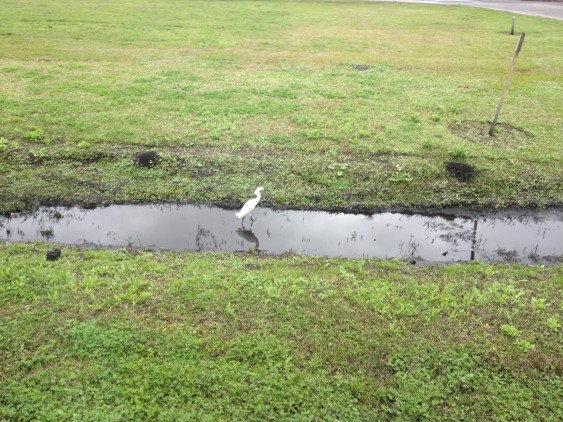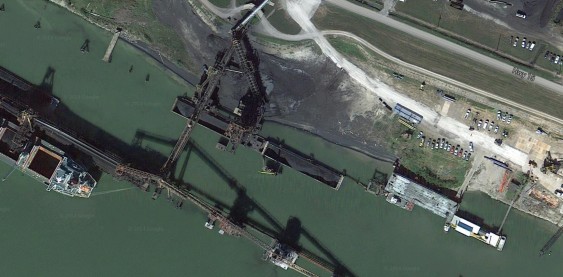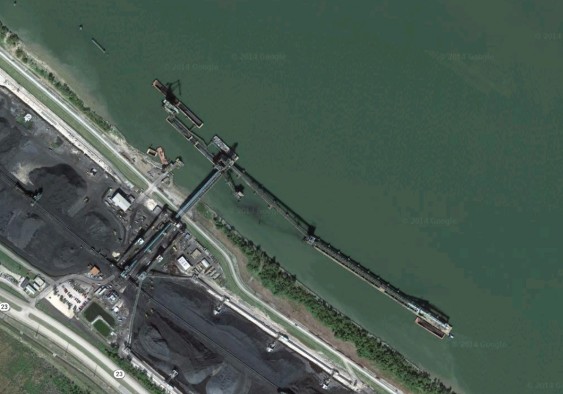I returned from a recent visit to the southern tip of Louisiana with a newfound appreciation for how important it is to prevent coal exports in the Northwest. The two Mississippi River coal facilities there—United Bulk Terminals and Kinder Morgan—are filthy, and plainly degrading nearby communities. Worse yet, another coal terminal, called RAM, is seeking permission to develop along the same stretch of the river.
Now comes news from the New Orleans Times-Picayune that local environmental groups are bringing a lawsuit against United Bulk on the grounds that it has repeatedly violated the US Clean Water Act. Click on that link and you’ll find glaring photographic evidence of coal and coal dust spilling into the Mississippi from the coal-loading equipment.
Here’s a photo I took of a snowy egret in a ditch near the United Bulk Terminals site. The water it’s standing in is literally black with coal contamination.

Predictably, the coal terminal operators complain that they’re somehow being treated unfairly. They claim to have spent tens of millions of dollars on modernizing the facility. But in some ways, their protestations are all the more damning because they demonstrate simply that coal terminals are almost always nasty and polluting neighbors.
It’s exactly what Sightline has found when examining coal dust complaints at terminals in Alaska, northern British Columbia, southern BC, Louisiana, South Carolina, Virginia, Australia, India, and South Africa. It’s the same story everywhere.
On some level, it’s all just painfully obvious. Here’s what Google Earth shows at the United Bulk Terminals. (Click the caption to explore the map interactively.)

There’s coal piled or spilled down to the river’s edge where it is bleeding into the water.
And just across the river, here’s a Google Earth image of the Kinder Morgan coal facility. You can see coal dust trailing into the river from the loading equipment.

Despite plain evidence of coal pollution on site—see images from the Gulf Restoration Network here, here, and here—not to mention dust spreading into communities at least a mile away, Kinder Morgan wants permission to expand its operations there.
The Louisiana lawsuit is not, ultimately, a story about the health of the Mississippi. It’s a story of an industry that will not—or perhaps cannot—operate without pollution and environmental degradation.
And it’s a story of a possible future: it’s what Puget Sound and the Columbia River could look like if the coal export boosters get their way.


Comments are closed.